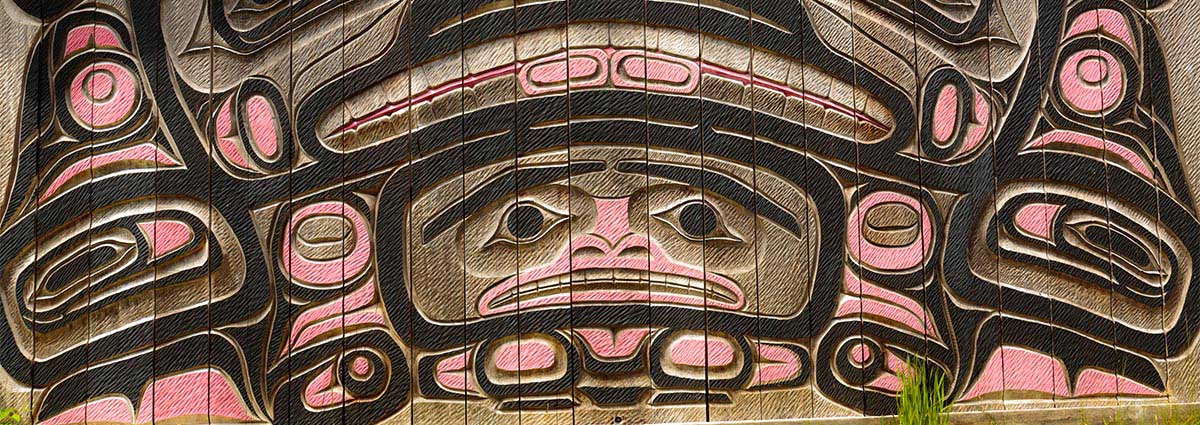A port call at Icy Strait Point on the Alaska Glaciers & Prince William Sound cruise takes you into Hoonah, an authentic Tlingit village on Chichagof Island. The cruise port of Icy Strait Point is owned and operated by the Huna Totem Corporation, an Alaska Native corporation with all profits supporting the local community. Today, 85% of the staff at this port are local Tlingit from Hoonah.

At the port, you’ll find restaurants, shops and the old salmon cannery which now houses a museum and shops. The town of Hoonah is two miles away and accessible via a walking path or shuttle buses. Wander into town to see a real Tlingit village today. You may come across a carver working on a totem pole at the carving hut in the center of town. There are a few stores here but this is town is for the locals. The souvenir shops are back at Icy Strait Point.

The Huna Tlingits lived in Glacier Bay for centuries before advancing ice during the peak of the Little Ice Age forced them to abandon their traditional home about 300 years ago for land further south. Oral history tells of their homeland, people and traditions. They dispersed and some settled in an area they used for subsistence harvesting each summer, the current town of Hoonah, which means “where the north wind doesn’t blow.” Today the Tlingit people live in islands stretching 480 miles from Icy Bay to Ketchikan, Alaska.
Their social structure is matrilineal with descent and rights passed down from mothers to children. Clans are divided between the Eagle, Raven or Wolf moiety at birth. Tlingit children were traditionally raised by their Aunt and Uncle, not their parents. They lived in communal long houses or clan houses usually built near good fishing grounds. They lived off the land – fishing, hunting, gathering, trading. Expert mariners, it wasn’t unusual for them to paddle far from home on a hunting or fishing trip.
Waste is not permitted in their culture. They use every part of an animal or fish. It is a sign of respect for all life to make use of what they harvest – deer, seal, hooligan, crab, clams, gumboots, mussels, seaweed, berries, salmon, herring. Cedar trees were important to their culture and used for clothing, houses, canoes, baskets and utensils.

Though a subsistence lifestyle was busy, the Tlingits found time for art, music and dance. They are talented carvers, weavers and artists. Dance is a form of expression and communication and common for enjoyment or at important potlach events. Chilkat blankets adorned with fringe, beads and buttons are worn by dancers. Carved and painted masks depict creatures of the natural and mythical world.
Carved wooden totem poles are the most known art form of the Tlingit people. Totem poles tell a story and can be carved for an event, birth, death, or a war. The animals featured, often eagles, bears and killer whales, describe a story of history or mythology related to the clan.
Tlingit culture is strong in Alaska and the people have persevered through hardships and cultural loss. Today, the tribe and Glacier Bay National Park are collaborating on resuming traditional activities including harvesting gull eggs and recently completed construction of a new Huna Tribal House inside the park at Bartlett Cove.
Visit Icy Strait Point (Hoonah) on the Alaska Glaciers & Prince William Sound voyage.




















































